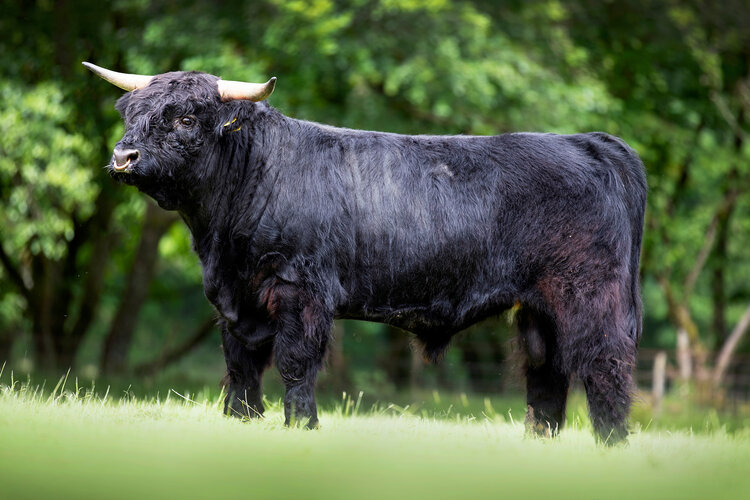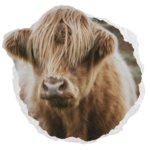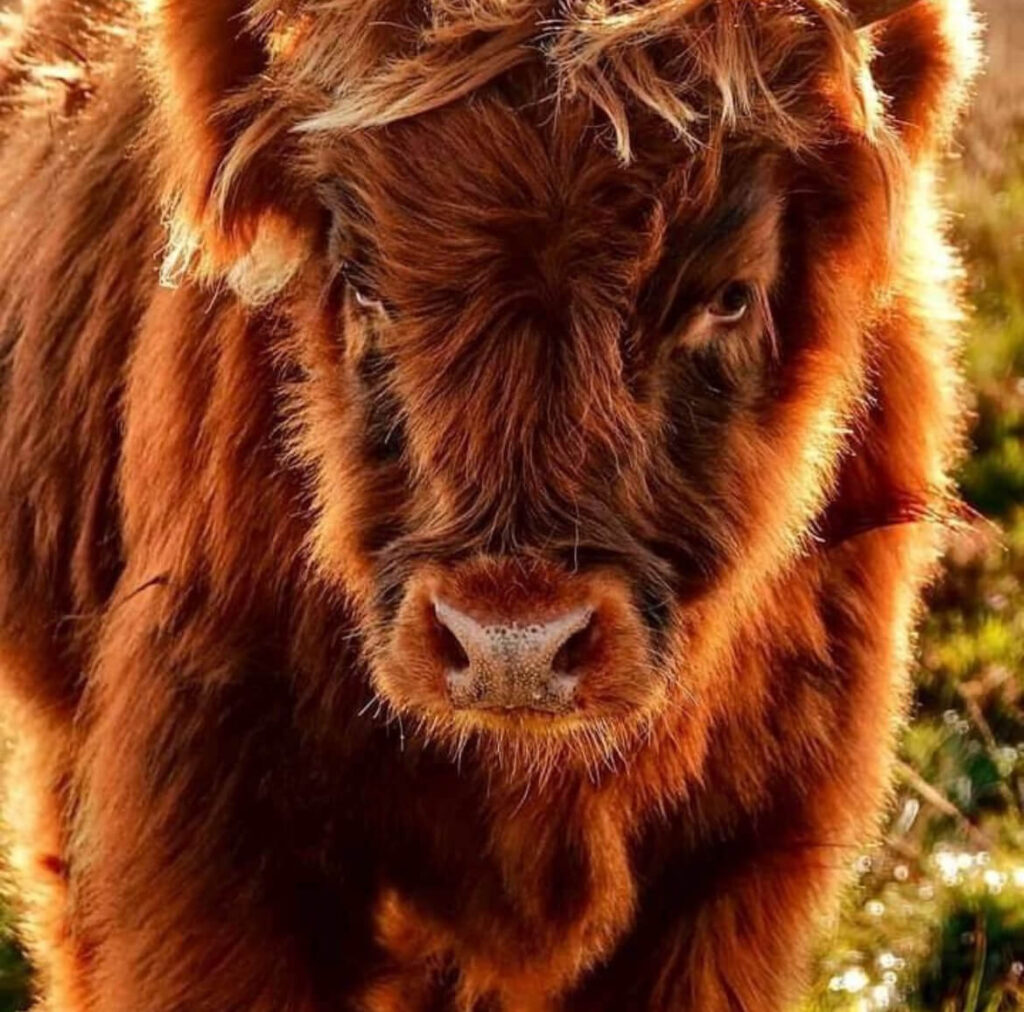Mini Highland Cow Breed
Of all the representatives of our British bovine breeds, the Mini Highlander Cow breed has the grandest and most picturesque head. It is most proportionate to the body of the animal, is broad between the eyes, while short from the eyes to the point of the muzzle.
The forelock between the eyes should be wide, long and bushy, and any bareness may detract from the animal’s appearance. The eyes should be bright and full, and when excited, will display courage.
When viewed sideways, there should be a proportionate breadth of the jawbones when compared with the width of the head in front. The muzzle should be short but very broad in front, with the nostrils fully distended to show breeding.
The Horns
One of the most noteworthy features in a Highlander Cow is of course, the horns. In bulls, the horns should be strong, and come level out of the head, inclining slightly forwards and also rising towards the points.
There are two types of horn in the cow. They generally come out from the head squarer than in the male, rise sooner and are longer, though they preserve their substance and a rich reddish appearance to the tips.
The other type of cow has horns which come more level from the head, with a peculiar back set curve and very wide sweep. A large number of enthusiastic breeders prefer this variety which possibly has a more graceful appearance.
In short, when well set, the horns of a Highlander give the animal a stamp of nobility which will attract the attention of any passer-by who would probably just walk past cattle of other breeds.
THE NECK & SHOULDERS

The neck should be clear and without dewlap below. It should form a straight line from the head to the shoulder in the cow, but in the bulls should have that distinct crest common to all animals of the bovine species.
This crest should come gracefully down to the roots of the horns, and be well coated with wavy hair, to give the animal its’ masculine appearance. The shoulder should be thick and fill out greatly, as it descends from the point to the lower extremity of the forearm.
BODY, BACK AND HIND

From behind the shoulder, the back should be fully developed and beautifully rounded without any sinking or hollow. It should also be as straight as possible, with the ribs springing out and being well rounded and deep.
When measured across the hips, the breadth should be large, and the quarters should be well developed from the hips backwards. The thighs should also be full and well developed.
Viewed generally, the quarters should be square between the hips and the tail, and from between the tail right down to between the hind feet. The legs, both before and behind, should be short and powerful with strong, broad, straight bones. The hoofs should be well set in and large, and the legs well feathered with hair.
The animal should be set wide between the forelegs, and should move with great dignity and style – the clearest sign of careful breeding.
LONG AND WAVY HAIR

There should be a profusion of hair which should be long and gracefully waved. Curly hair is regarded as a fault and has become common in some folds. This may be due to a growing desire to make Highlanders grow big from feeding them higher and housing them more.
Experience however has shown that the more exposed they are, the animals generally have more hair with less tendency to curl. Indeed, island cattle have much more hair than mainland cattle, due to them never being housed in winter.
Although the classic image of a Highland cow today is red they also come in other shades including yellow, brindle, dun, white and also black, the breed’s original colour. In general, a good herd should have a mixture of colours. The thickness of the skin, as in all fattening breeds, must always be considered. Thankfully, Highland cattle have been adapted by nature to withstand exposure to harsh conditions.

